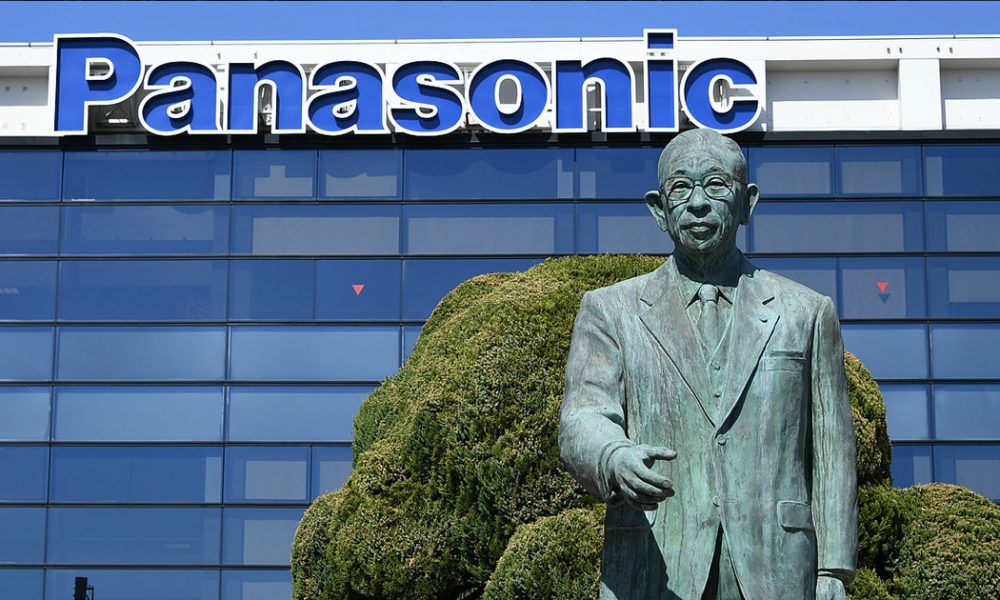How Konosuke Matsushita succeeded in making Panasonic a global giant?
Konosuke Matsushita, founder of the Panasonic brand, has achieved countless successes in his 95-year life. He started as a technician at the age of 15 at a lighting company in Osaka, Japan.

He was promoted to inspector at the age of 22. Since the product he developed was not liked by the management, he resigned and founded his own company. Panasonic brought many innovations to the consumer electronics industry with its brand. Konosuke Matsushita managed to become one of the few names that brought the Japanese to the top of the world technology market.
Konosuke Matsushita was born on November 27, 1894 in the village of Wasamura in Wakayama, Japan, the youngest of eight children to a farming family. He had a good early childhood, thanks to the means of his family engaged in the rice trade. Due to the negative developments in the Japanese commodity market in the early 1900s, he settled in the city with his family. Like his other siblings, Konosuke started working at an early age to support his family. Even before graduating from primary school, he worked as an apprentice in many retail stores. During this period, the electric vehicles he saw in the Godia bike shop attracted a lot of attention.
Little Konosuke's work began with the cleaning of the store before sunrise and continued until late in the evening. Konosuke was able to withstand these working conditions, which were too harsh for a 9-year-old boy, with the pride of supporting his family with his salary. During his apprenticeship at the Godia bike shop, he also did some metalwork and quickly learned to use a lathe and other tools. During this period, which lasted for 5 years, he improved himself and started working at Osaka Electric Light Company in 1909.
By the early 1900s, trams were starting to appear on Osaka's main streets, and interest in electric vehicles was increasing day by day thanks to Thomas Edison's inventions. Konosuke Matsushita, like many Japanese, understood that the future would be shaped by electric vehicles. He found a busy and difficult work environment at Osaka Electric Light Company. His first project was to lay electrical cables in the city theater. This project, which was extremely difficult according to the conditions of the day, took 6 months to complete. Konosuke Matsushita was working more than 20 hours a day so that the project could be completed on time. As such, his young body could not stand these working conditions and caught pneumonia. This intense interest and self-sacrifice for his job brought along a rapid rise in his career at Osaka Electric Light Company.
In 1915, Konosuke Matsushita married Mumeno, a friend of his sister's. A year later, he was promoted to the position of inspector in the company. It was a great pride for the Matsushita family to be promoted to the position of inspector at the age of 22 in the company that he started as a technician at the age of 15. Matsushita, who spent most of her time with her work, worked on light sockets in her spare time. Thanks to these studies, he was able to develop a special light socket. When he explained the socket to the company executives, the management thought it was useless and wanted Matsushita to continue working in desk jobs. But this was a huge disappointment for Matsushita and revealed one of the most important turning points in her life.
On June 15, 1917, Konosuke Matsushita quit his job, which he loved very much and was passionate about. His father, a good entrepreneur, raised Konosuke and his siblings in the same spirit from an early age, advising them to take risks and be brave in what they believe in. Believing that the light socket he developed would achieve a great sales success, Konosuke Matsushita believed that he should resign from the company he worked for and establish his own company with this entrepreneurial spirit instilled by his father. Next to Matsushita was his brother-in-law, Toshio Iue, who would later co-found Sanyo Electric. They rented a small 2-room apartment in east Osaka to manufacture and sell the light sockets.
However, Konosuke Matsushita and Toshio Iue did not have any capital to turn these things around. They sold some of their family's valuables in order to find the material source for production. Moreover, the first sockets they introduced to the market received almost no attention. But neither of them had any intention of giving up. Towards the end of 1917, they seized a very important opportunity. The manager of one of the important companies of the time, who knew Konosuke Matsushita from the time he worked at Osaka Electric Light Company, ordered insulation boards for electric fans. These duo, who completed the production of the plates perfectly, established Matsushita Electric Industrial Company on March 7, 1918 with the income they obtained from the sale.
Matsushita Electric Industrial Company
When the company was founded, it had only 3 employees. They placed a two-handed press machine for mold making in the room they used as a workshop on the ground floor. They did not have the necessary resources for another tool that they could use in production. Their success in producing insulation boards for electric fans motivated Konosuke Matsushita to develop electrical appliances. But they did not have enough capital yet, the sale of light sockets had not yet reached the desired level. It was wiser to concentrate on small vehicles to find the necessary capital. On top of that, Matsushita worked late at night in the workshop to develop an additional plug and a two-way socket.
These products, developed by Konosuke Matsushita, provided a solution to the company's capital problem. Made of resin and having an innovative design, these products were both higher quality and 50 percent cheaper than other products on the market.
In 1922, the company laid the foundations for the new factory and management office on an area of 230 square meters. The company needed a skilled workforce to keep growing, but there was no educational institution in Osaka that could meet such a need. As such, Konosuke Matsushita was personally involved in the training of employees in order to contribute to the formation of a qualified workforce. And in a short time, positive results began to be obtained. Interest in connector plugs and light sockets increased in Tokyo after Osaka, making it difficult to meet incoming orders. New staff were recruited and trained to meet the increasing demand. Towards the end of the year, the number of employees employed by the company exceeded 50 and they opened a branch in Tokyo.
The 1929 Depression and the Panasonic Brand
As things settled down, Konosuke Matsushita began to spend most of his time working on new discoveries and inventions. He always kept a pen and paper with him to write down new ideas that came to his mind, and he was making interesting discoveries. Matsushita, who develops many products himself, from lamps used in bicycles to battery-operated lamps, sent samples to many stores in Osaka and Tokyo to try his products. When he realized that the market potential of battery-powered bicycle lights was high, he began to spend more time developing these products. Although battery-powered bicycle lights were available during this period, they had a lifespan of about 3 hours. Thanks to his work, Matsushita was able to develop a new bicycle lamp with a charge time of up to 40 hours.
The company began to grow even faster in the second half of the 1920s, thanks to the second generation of battery-powered bicycle lights. However, the 1929 Depression negatively affected Matsushita Electric Industrial Company like many Japanese companies. Demand that fell by half during the crisis caused many companies to disappear from the market. To prevent his company from going bankrupt, Konosuke Matsushita had two options. It would either lay off workers or head to a new area with high demand. Matsushita chose the difficult one and did not dismiss any of her employees by turning to radios, one of the most popular products of those years. Its partnership with Kokudo Electric Co. has increased the market power of the Panasonic brand despite the crisis environment.
The R-31 tube radios developed by Konosuke Matsushita, although more expensive than other radios on the market, had better technical equipment and reached a high sales figure. Since 1933, Matsushita has intensified its work on many product groups such as radios, lamps, electric motors, electric fans in order to increase its product diversity in the field of electronics.
Konosuke Matsushita expressed his thoughts on his job as follows: “Our job is something society has entrusted to us. That is why we must work to manage and develop the company in a sound manner that will contribute to the development of society and the improvement of people's lives.” Matsushita, II. After World War II, the Japanese made a great effort to rise in almost every field, especially in technology. During this period, Panasonic's product range had grown to over 600, with the company's capital assets rising from 3 billion yen to 10 billion yen. Panasonic's strength increased in the European market as well as in the Japanese market. However, the company had a hard time due to the commodity tax imposed by the government in 1950. To meet this challenge, the Philips brand collaborated and Matsushita Electronics Corporation was established in 1952.
Thanks to this partnership, the Panasonic brand has achieved a rapid rise in the world market. Moreover, bilateral relations between the governments of Japan and the Netherlands have strengthened and it has become easier for Panasonic products to enter the European market. With the refrigerators that started to be produced in 1953, Panasonic's product range started to increase in electrical household appliances. Introduced in 1960, color televisions attracted great attention in the European and American markets as well as in the Japanese market. Matsushita Electric was established in Taiwan in 1961 to realize the company's first overseas production activities. The company's production and sales activities in the USA were managed through Matsushita Electric Corporation of America, which was established in New York.
Konosuke Matsushita retired in 1961 and began to follow the work from afar. In 1963, he met with Prime Minister Hayato Ikeda and pointed out that reforming education is of vital importance for Japan in order to develop a qualified workforce. Matsushita, who was chosen as the industrialist of the year by Life magazine in 1964, underlined in a series of conferences he gave during his retirement that companies should never stop making continuous growth moves even in times of crisis. Konosuke Matsushita, who attaches great importance to bringing a management philosophy based on flexibility and operational autonomy, especially to young generations, passed away on April 27, 1989 in Osaka.

